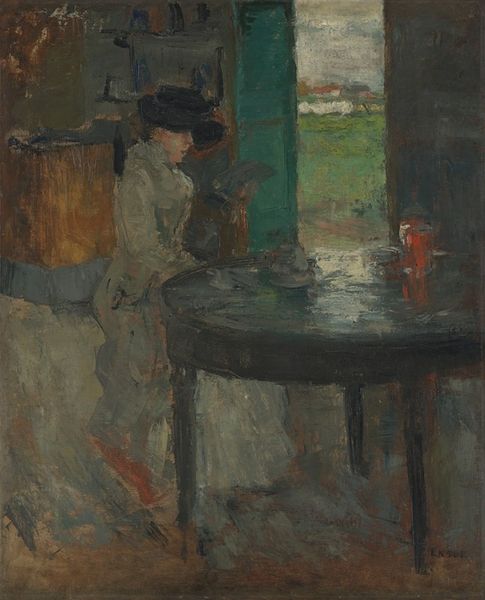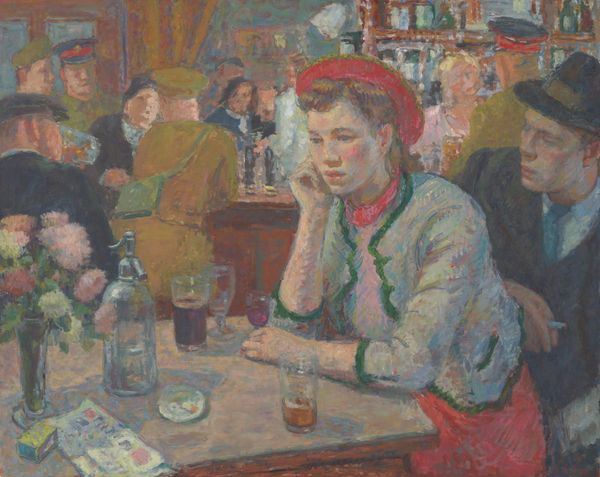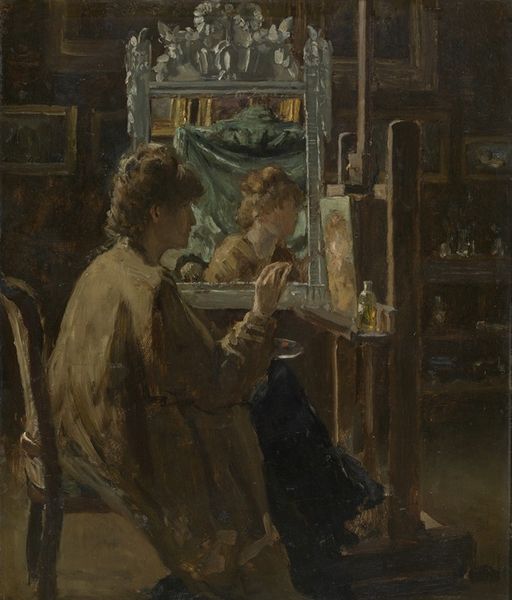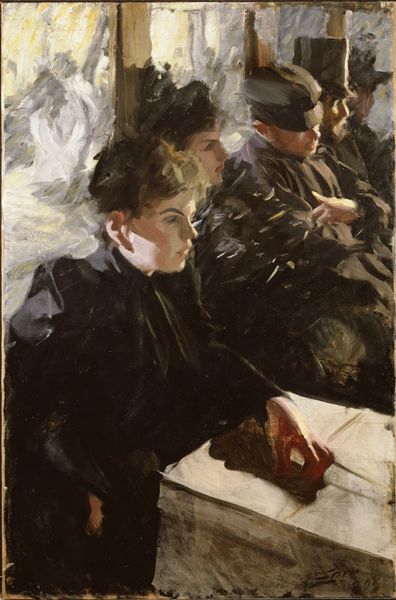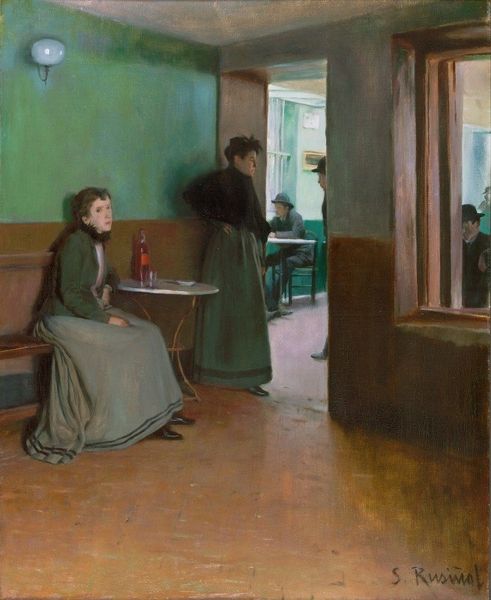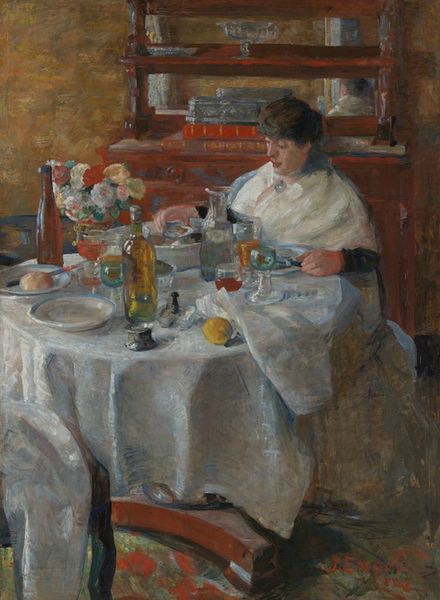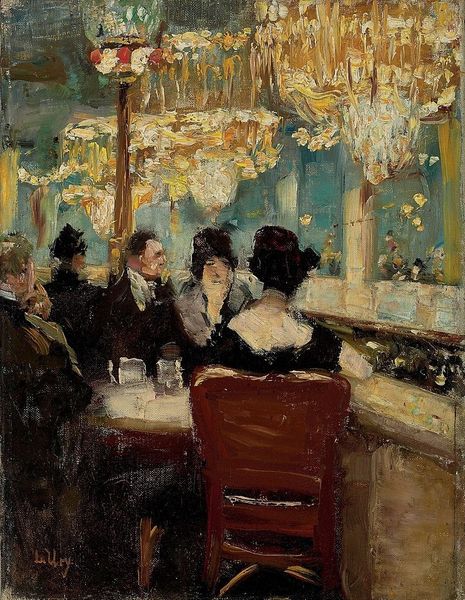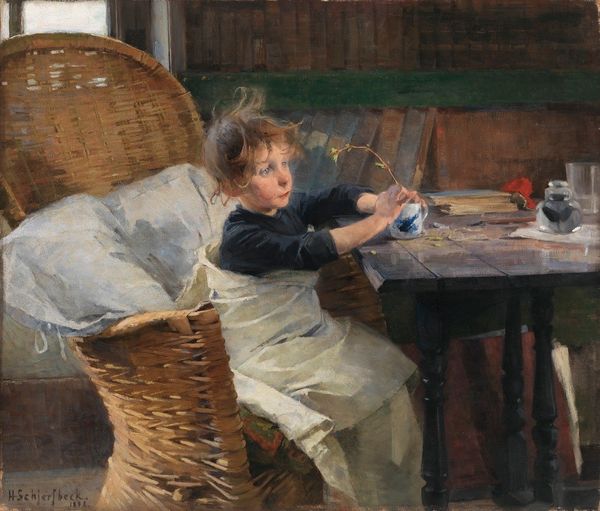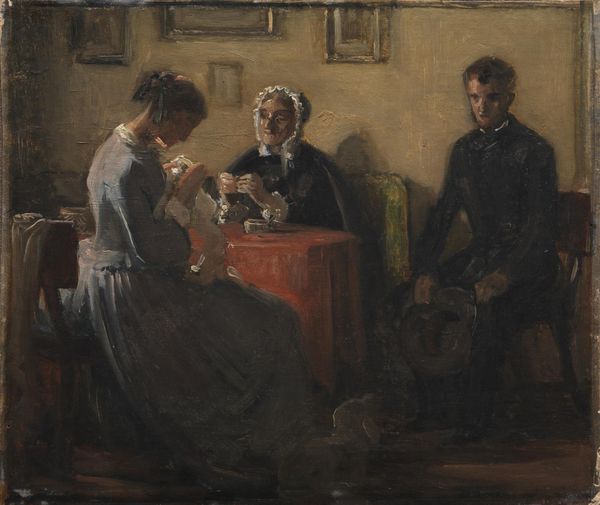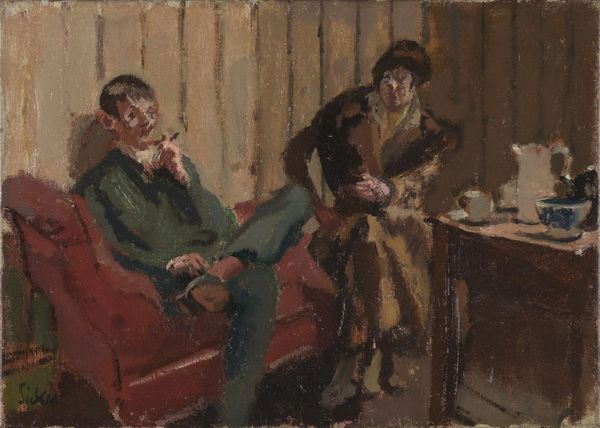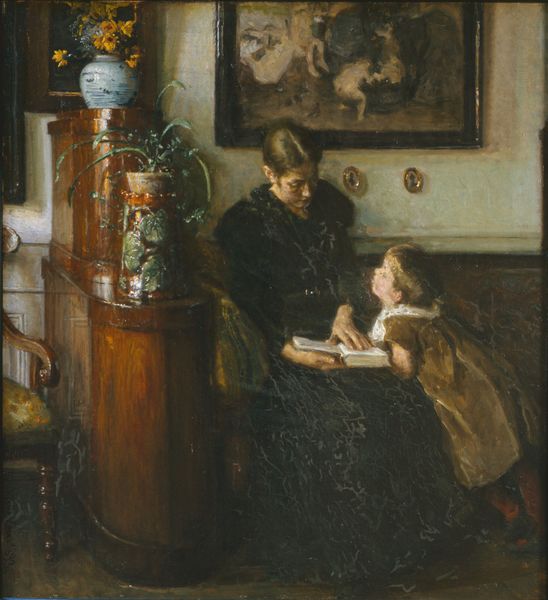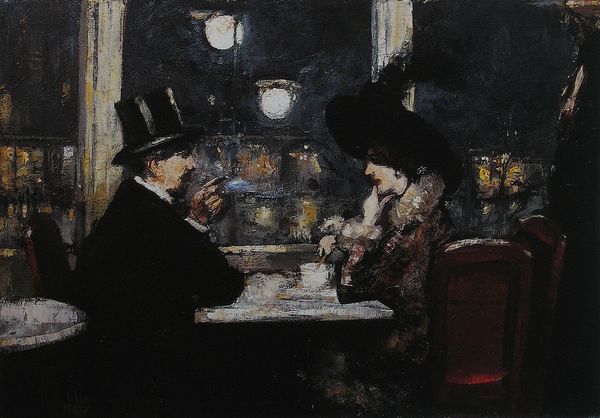
Copyright: Public domain
Curator: Look at this evocative snapshot of Parisian nightlife, Ramón Casas’s "Moulin de la Galette Interior" painted in 1891. It's rendered in oil on canvas. Editor: The immediate thing that strikes me is its muted palette. Earth tones dominate, giving it this smoky, intimate feel, despite being a public space. Curator: Exactly, the composition speaks volumes about the relationships within this space. Observe how the figures are arranged; there's a palpable sense of connection among some, yet a stark disconnection for others. It portrays how social spaces dictate hierarchies. Editor: I’m interested in the materiality of the paint itself. Look at the loose brushwork. Casas isn't aiming for photographic realism. He's interested in capturing the atmosphere of the Moulin through visible layers and strokes. Curator: Right, and those fluid brushstrokes evoke movement and energy while highlighting the societal position of this dance hall. Who frequents such places? What roles are assigned, performed? How does this all interact to shape our perceptions about each other? Editor: The oil paint serves the context by constructing a particular experience. We, as viewers, observe how these figures present, maybe even perform, a part of their identity through dress or physical interactions under public observation. Curator: Considering the socio-political moment, too—this was during a period of burgeoning class consciousness. Such places represent the complex ways different societal groups mingled and observed each other. There is opportunity and pretense, but the artist asks how are all these people actually functioning? Editor: I see this in relation to the social and cultural history in the region. The piece doesn’t try to be “true,” because the experience is so tied to location and community values of late 19th-century Paris. How might similar environments be portrayed through textiles? The use of dyes? These are means by which a painting can further connect. Curator: Seeing "Moulin de la Galette Interior" today invites reflection on the intersection of art, society, and individual experience. This scene highlights the importance of examining history in all of its messy, imperfect portrayals. Editor: For me, focusing on the painting’s own materials allows it to engage not as just image or reproduction but to have conversations about consumption and value that we have even today.
Comments
No comments
Be the first to comment and join the conversation on the ultimate creative platform.

